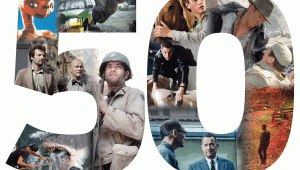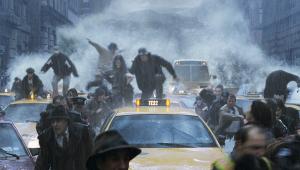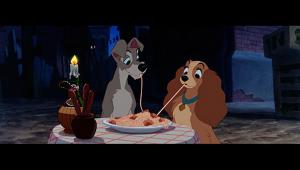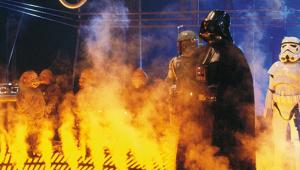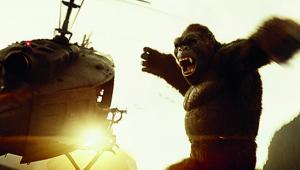Homegrown horror

Hammer’s output didn’t win any Oscars, but it did help prop up an ailing UK film industry, saturated by US imports and haunted by government increases in the entertainment tax. In fact, Hammer dominated cinema screens for over 25 years, with fans eagerly awaiting the next instalment of Frankenstein or Dracula. The studio made household names of actors such as Peter Cushing and Christopher Lee, saved a giant US film studio from bankruptcy and even won the Queen’s Award for industry during the mid-’60s.
Starting life in the early ‘30s under the direction of William Hinds, a businessman and part-time vaudevillian, it wasn’t until the early 1950s that Exclusive Films, as the company was known at the time, began producing the type of flicks for which it is best remembered. Having established itself in a grand old house on the banks of the River Thames near the village of Bray, the fledgling company fell under the control of James Carreras (son of co-founder Enrique) and William’s son, Anthony Hinds. They changed the name to Hammer and forged a future for the company by producing second-run features for double-bill programmes.
‘X’ marks the spot
It was the science fiction story The Quatermass Xperiment (based on the BBC TV serial by Nigel Kneale, and so named in order to capitalise on the recently created X certificate) that first brought Hammer to the attention of the international film community in 1954. Buoyed by the success of Quatermass…, Carreras gave the greenlight to an all-new version of Frankenstein. When Universal Studios (who produced the classic Frankenstein series in the 1930s and ‘40s) threatened to sue if Hammer ripped off any of its ideas, Carreras and writer Jimmy Sangster returned to the original Mary Shelley novel. The resulting film carefully avoided all references to the Universal version and was released in blood-red Eastmancolor in 1957, under the title The Curse of Frankenstein. It starred Peter Cushing in the role of demented genius Baron Frankenstein and Christopher Lee as the Creature, and was to mark the beginning of a fruitful onscreen collaboration. Thanks to Hammer Films, the two actors were to return time and time again as fictional opponents in the age-old struggle between good and evil.
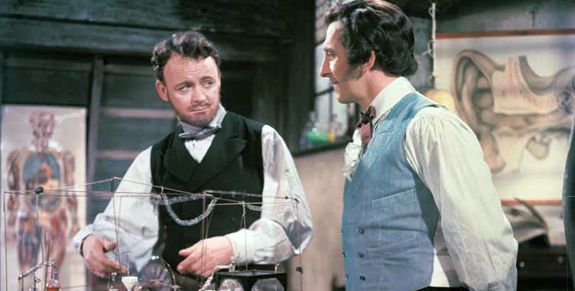
Warner Brothers quickly snapped up the distribution rights to Curse… and, with its combination of science fiction, gothic horror and garish visuals, the film enjoyed a huge box-office success. Oddly, considering its knee-jerk reaction to Hammer over the use of the Frankenstein character, rival studio Universal then took the chance to distribute the company’s second horror film Dracula. Produced on a miniscule budget of only £81,000, the film again starred Peter Cushing and Christopher Lee and its impressive take at the box-office actually saved Universal from financial disaster.
Cushing’s portrayal of the benevolent and heroic Dr Van Helsing in Dracula contrasted with the cold, calculating performance he gave as Baron Frankenstein, while Lee’s take on the Transylvanian Count demonstrated once again his ability to flesh out the ultimate screen villain. Throughout his long career, Lee was called upon to play many infamous characters, both historical (Rasputin) and fictitious (the Mummy), but it is for his sinister portrayal of Count Dracula that he’s best remembered. The film did evoke some bitter criticism from the press, who were shocked by the gory visuals, but teenage audiences seemed unfussed and the X certificate quickly became the established symbol of Hammer’s movie output. The climax of Dracula, in which Van Helsing improvises the shape of a crucifix with two candlesticks and forces the screaming vampire back into the flesh-dissolving rays of the morning sun remains a defining moment in horror cinema.
The audience’s demand for more blood, a thick theatrical mixture that ran from vampire bites down the graceful necks of nubile young women, or oozed from the lacerations covering the bodies of Dr Frankenstein’s more frightful creations, resulted in a long succession of sequels, beginning with The Revenge of Frankenstein in 1958, with Hammer returning to its gothic roots in films such as the The Mummy, The Brides of Dracula, and The Curse of the Werewolf, which helped launch the career of Oliver Reed in the role of the unfortunate lycanthrope.
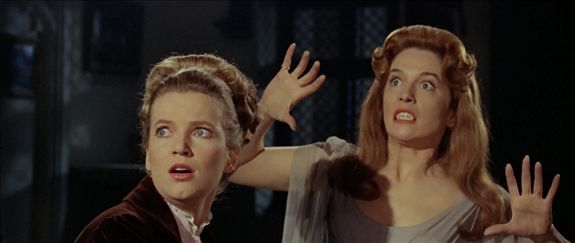
Award winner
The double-bill of The Curse of the Mummy’s Tomb and The Gorgon in 1964 marked a change in the studio’s fortunes, when Hammer joined forces with American studio 20th Century Fox. This partnership guaranteed overseas distribution, as well as financial security for the studio, and shortly after the release of Dracula: Prince of Darkness (reviewed on Blu-ray here), Hammer moved to Elstree Studios. It was also during these halcyon years for the company that its three million dollars in export earnings won the coveted Queens’s Award for industry.
Titles such as One Million Years B.C, a prehistoric drama that set the voluptuous curves of Raquel Welch against Ray Harryhausen’s stop-motion dinosaurs, and The Plague of the Zombies, with its terrifying dream sequence set in a graveyard, continued to break overseas box-office records. The Devil Rides Out (with Christopher Lee as the Duc de Richleau) and Quatermass and the Pit appeared around the same time as Hammer’s final co-production with Fox, a television series called Journey to the Unknown; best remembered for its innovative ‘rollercoaster’ credits sequence.
Warner Brothers – Seven Arts were next on board, offering Hammer exclusive distribution rights, while a steady stream of movies followed, including Frankenstein Created Woman, The Mummy’s Shroud (with its amusing tagline ‘Beware the beat of the cloth-wrapped feet’), Dracula Has Risen From The Grave, Frankenstein Must Be Destroyed and Taste the Blood of Dracula.
Heaving bosoms
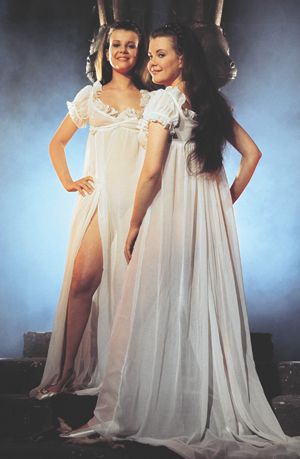 International support began to dry up as the studio entered the early 1970s and the desire to make a quick return at the box office led to cheap and cheerful quickies like the bigscreen version of the TV sitcom On the Buses. The problem was made worse by the unprecedented success of violent US films such as Bonnie and Clyde and The Wild Bunch. This new, grittier style of filmmaking forced Hammer to bare more than just its teeth in order to entice audiences. So films such as The Vampire Lovers, Lust For a Vampire, Countess Dracula and Twins of Evil had more than their fair share of female nudity and heaving bosoms. More traditional sequels like The Horror of Frankenstein, Scars of Dracula and Blood From the Mummy’s Tomb were less successful.
International support began to dry up as the studio entered the early 1970s and the desire to make a quick return at the box office led to cheap and cheerful quickies like the bigscreen version of the TV sitcom On the Buses. The problem was made worse by the unprecedented success of violent US films such as Bonnie and Clyde and The Wild Bunch. This new, grittier style of filmmaking forced Hammer to bare more than just its teeth in order to entice audiences. So films such as The Vampire Lovers, Lust For a Vampire, Countess Dracula and Twins of Evil had more than their fair share of female nudity and heaving bosoms. More traditional sequels like The Horror of Frankenstein, Scars of Dracula and Blood From the Mummy’s Tomb were less successful.
Peter Cushing and Christopher Lee wearily battled on in tedious outings such as Dracula AD 1972 and The Satanic Rights of Dracula. Even the innovative Captain Kronos: Vampire Hunter failed to generate much-needed box-office revenue. And, by now, Hammer Films was being played at its own game by UK rivals such as Amicus Films, excellent period dramas like Witchfinder General and European films such as Mark of the Devil. Ironically, the gratuitous violence in both films owed a great deal to the gory style of filmmaking that Hammer pioneered in the 1950s.
The studio’s final release in 1975 was To The Devil a Daughter, a Dennis Wheatley story, which it hoped would capture some of the box-office success of The Exorcist. But not even the casting of veteran American actor Richard Widmark could save this film from being just one notch above mediocre.
Throughout the late ‘70s, James Carreras presided over a company in name alone as the British film industry had all but collapsed. After a number of aborted film projects, Carreras retired in 1978 and former Hammer accountant Roy Skeggs and studio veteran Brian Lawrence took over the reins, determined to resurrect the Hammer name with two television anthology series: Hammer House of Horror and Hammer House of Mystery and Suspense. A documentary series called The World of Hammer and the 1994 TV special Flesh and Blood: The Hammer Heritage of Horror signalled the last gasp of the once great film institution.
Back from the dead
However, like any good vampire, Hammer refused to stay dead. Numerous TV screenings in the intervening years helped to keep the brand in the public eye. And in 2007 the Hammer franchise finally rose from the grave to begin a fresh assault on audiences around the world.
Under the chairmanship of Simon Oakes, the new Hammer Film studios’ first project was a web series called Beyond the Rave, a rather lacklustre modern vampire tale featuring Hammer legend Ingrid Pitt. A low-budget feature film entitled Wake Wood followed. Produced in conjunction with Fantastic Films and Vertigo Films, this had a very limited cinema release last year before going straight to DVD. Oakes followed this with a mid-budget film intended to capture the American market. The Resident was directed by Finn Antti Jokinen and starred Hilary Swank, Jeffrey Dean Morgan and Sir Christopher Lee. However, its release was delayed until after that of the the studio’s English language remake of Let the Right One In entitled Let Me In. The studio’s latest project is a bigscreen adaptation of the grisly ghost story The Woman in Black starring Daniel Radcliffe.
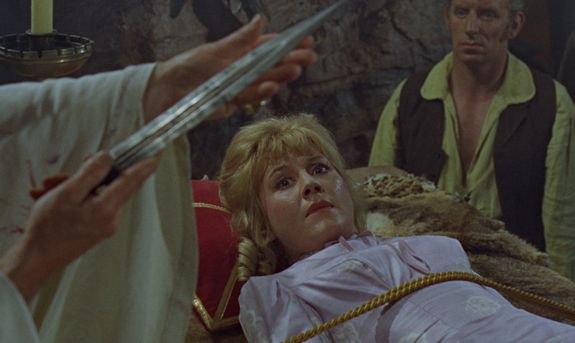
Even more exciting for fans, though, is the news that Hammer has partnered with StudioCanal to undertake a major restoration of more than 30 films from its library, with additional material being supplied by original US distribution partners 20th Century Fox, Warner Bros. and Paramount. The plan is to bring a plethora of the studio’s classic chillers to Blu-ray for the first time, beginning with Dracula: Prince of Darkness, followed by The Plague of the Zombies (pictured above) and The Reptile on May 7.
The most interesting for fans, though, is set to be Terrance Fisher’s 1958 adaptation of Dracula, which will include additional footage trimmed by the UK censors that was originally believed lost until being rediscovered in Japan late last year.
This combination of new cinema releases and restored classics on Blu-ray could mean that the Hammer Films legacy is set to continue for many more years to come.
 |
Home Cinema Choice #351 is on sale now, featuring: Samsung S95D flagship OLED TV; Ascendo loudspeakers; Pioneer VSA-LX805 AV receiver; UST projector roundup; 2024’s summer movies; Conan 4K; and more
|




